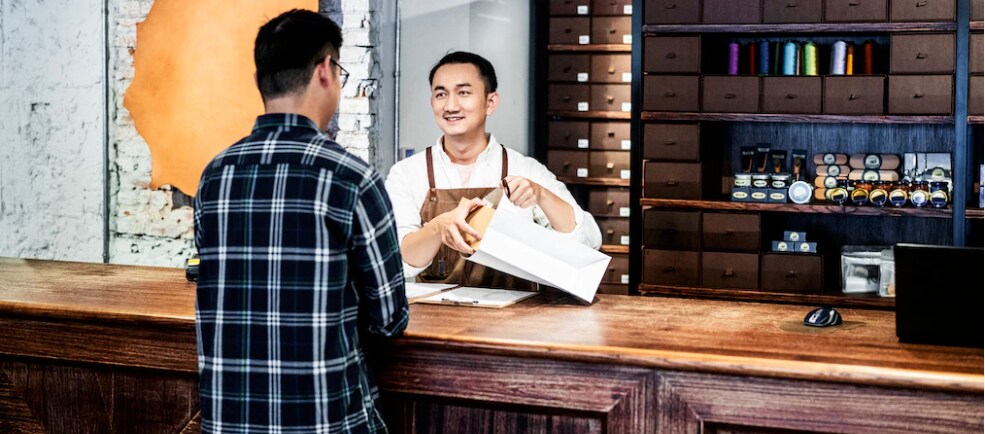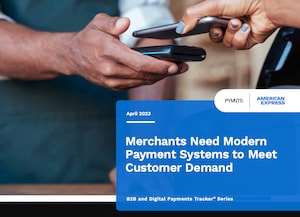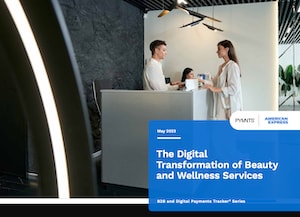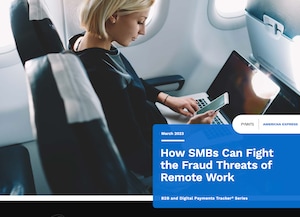June 13, 2022
How to Stay on Top of Your Customers' Changing Expectations

Mike Michalowicz
Author, Profit First
“We’re all in this together” has become one of the most overused and presumptive statements from the last year and a half. Everyone has their own set of circumstances, personally and professionally. Quite a few small-business owners have confided in me that their business performed quite well. Others had their best year yet, some weren’t affected and some shuttered their businesses for good.
If your small business is up and running, chances are you had to make some changes in your operations along the way. The world—our environment, technology and yes, the pandemic—continues to evolve. Likewise, your small business needs to evolve to meet your customers' changing expectations. Never before has there been a larger demand to meet your prospects’ needs in a new and sustainable way. But how?
You don’t need a big budget to take action. There are three efficient and affordable steps you can take to predict your customers’ expectations.
1. Find out what your customers need.When you don’t know what your customer wants, ask.
No small business is going to thrive on assumptions. When it comes to delivery on expectations, so many businesses are just guessing: “I think my client wants this, I think my client is this type of person.” That’s a huge mistake.
"[A] survey is an excellent avenue to let [customers] know your services are available, and that you are able to enhance them so they serve any new needs."
It’s important to amplify and personalize your communication with your customers. In order to understand what your customers need and win over your target audience, you must get to know them. Then, you will know, and be able to deliver, on their expectations.
Identify your customers. Then survey them to pinpoint their needs and pain points.
Bottom line, to serve your customers effectively, you need to understand your customers’ behavior. To do this, you need some serious communication to gather customer feedback. One of the best communication techniques is to reach out to your patrons with a survey. (You can create one simply online.) Some customers may not even know if you’re still around, and a survey is an excellent avenue to let them know your services are available, and that you are able to enhance them so they serve any new needs.
When I’m ruminating and creating a new system, my office sends out a survey to our mailing list. Then I tailor the system to fit the current pain points and needs of the small-business owners I serve. I did this for my next book, Get Different. My team and I sent a survey out to over 100,000 readers, asking what their biggest marketing hurdle is. It wasn’t their offering. Most small-business owners have outstanding offerings. Hands down, their sticking point was how to attract and direct customers, ultimately converting sales. From those responses I was able to tailor a new system and write my next book.
Consider your tone in your surveys and communication.
Think about the times you’ve had a problem, or a lousy day, and you spoke with an empathetic friend. They nod at you, listen and perhaps offer a solution. They make you feel seen. This is what you need to do for your customers. And a little empathy goes a long way in determining how to tailor your offering and marketing to meet your customers' expectations, so show it.
Instead of leading questions, make sure your inquiries are open ended. Ask your customers how the pandemic has affected them and their business. There’s a fine balance here. You don’t want to pander to people, exploiting a global health crisis for your marketing. This will only turn people away. Be sure to ask questions specific to them, so they know they're not just getting your ten second pitch. Mention that you realize your small business needs to serve in a new way, and be sure to ask what you can do to make their customer experience extraordinary for them.
In my office, our surveys follow the EVOLVE method. This ensures our communication is the most effective way to predict customer expectations.
- Empathy: Ask about and acknowledge their situation and feelings. Their position would be yours if you walked their exact path. They need to know you are truly on their side.
- Vision: Ask questions to find out the desired outcome they seek for the positive outcome you desire. What vision are you committed to and willing to work for?
- Opportunity: Collectively identify the small, bite-size opportunities in what they can do right now. For them to believe in what they can achieve, they need to take immediate, yet manageable action. As you listen to them, seek to find what is manageable. For some it is big steps forward, and for many it is small, tiny victories strung together.
- Listening: People who can openly speak their feelings find that process alone to bring relief. Encourage them to speak, even if it isn’t “productive.” Ask open-ended questions, such as: How do you feel? What can you realistically do about it? What has worked best for you in the past?
- Values: Our values drive our behavior. We adhere to them, but can forget them under duress. To remind them of their values ask this simple question: “If your children/loved ones were in this situation, what would you tell them?”
- Experience: Advice-giving builds resistance. Hearing “you should” or “I suggest you...” means the person hearing this has already failed to do it. Instead say “In my experience I did...” or, “In a similar situation our company did...” Respond to their challenges and opportunities by sharing a true story of what you did or witnessed, so they are free to absorb and observe the knowledge without judgement.
2. Level up your offering and marketing by getting different from everyone else.
Customer behavior can be fickle. Especially because most of us have a short attention span. You can’t survey, or serve your customers, let alone exceed their expectations, if you don’t reach them in the first place. In order to get noticed, you must get different and stand out in your industry. For this, my team and I use The D.A.D. Method. Yes, really. The D.A.D. Method stands for:
- Different: You need to differentiate your small business to get the attention of your customers. You don’t have to create a billboard with you dressed up as a clown (in fact, please don’t), but consider a different medium from what you’ve used in the past. Refer to your survey results to understand the best different to be so you can attract your customers.
- Attract: Now that you garnered attention, how are you going to hold it? Waving a shiny object will only last for so long. This is a good time to relay that your offering is not ordinary—it’s elusive, exclusive, the world needs it. It’s just the solution to solve your customers’ problems.
- Direct: Here, you need to act fast. If you’ve captured attention for more than 2.2 seconds, you need to have a call to action to direct your customers to do what you want. This doesn’t have to be the “big sell,” either. Start with a call to action that directs your customers to sign up for your not-to-miss newsletter, a free webinar or for free resources. These options will engage your customers for future services.
Above all, when “getting different,” be sure you’re reflecting what your small business is about in an authentic way. There’s a fine line between catchy and gimmicky.
3. Deliver. Once you’ve identified your customers and received their attention, how will you deliver your offering in an effective and affordable way?
You don’t have to deplete your budget to sell your product to your customers. When it comes to investing in your small business’s offering, your customers are going to want it to be convenient, affordable, and sustainable.
- Deliver your product efficiently. Make your customer’s purchase friction free. Have you ever received a product and the packaging was nearly impossible to open? Makes the experience a lot less enjoyable, not to mention inconvenient, right? When we have friction in using a new product, it can decrease our confidence in it. Ensure that the delivery method of your offering is user friendly, and you will have a customer for the long term.
- Provide online sales and content. Depending on what type of small business you have, providing online sales, evergreen products and actionable, “how to” content is one of the most affordable ways to sell to your customers. Create webinars, trainings and courses that can train customers on your products, and stand the test of time—or the test of any potential quarantines that could occur.
You can still use your data forecasting and analysis history to predict the expectations of your customers. Just be sure your small business tailors its outreach with new needs in mind. Those you serve will remember you.
Photo: Getty Images








